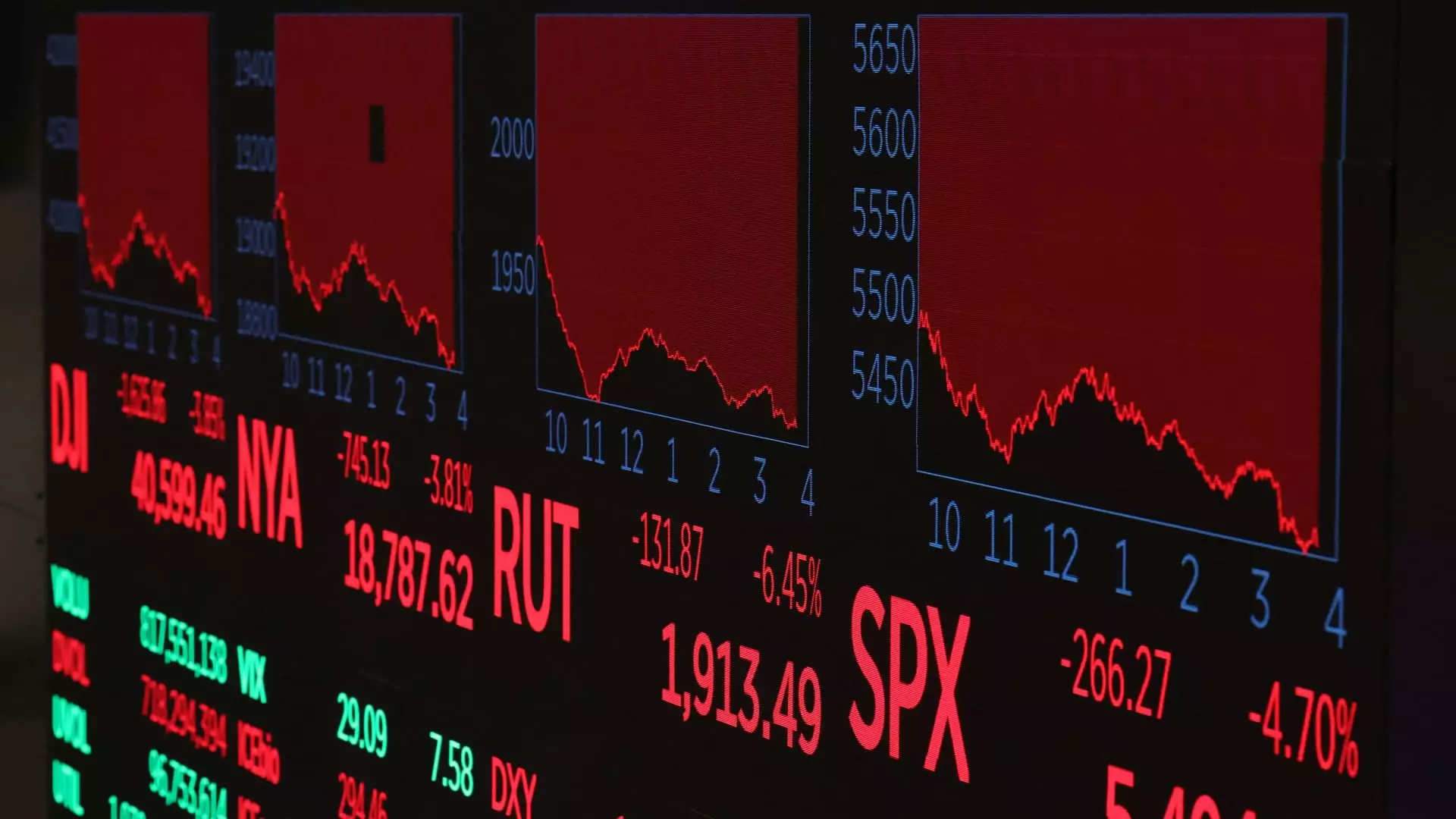As Wall Street quaked under the weight of President Donald Trump’s tumultuous tariff policy, a new breed of fearless investors emerged. Among them is Rachel Hazit, a 32-year-old marketer from Philadelphia, who observed the downturn not with fear, but with opportunistic glee. In a climate where the consensus whispered doom and gloom, Hazit saw a significant dip in prices as mere clearance on quality stock. Unlike the traditional investors frantically recalibrating their strategies, Hazit and many others took a bold stance, diving into investments as if the market was holding a sale.
Unlike past financial crises that saw mass retail capitulation, the current wave of everyday investors starkly juxtaposes the mood of institutional players, who are recoiling from the possibility of a bear market. This divergence creates an intriguing dynamic worth exploring. For many of these retail investors, the decline in stock prices has been interpreted differently. Instead of retreating, they’re plunging into the market, armed with knowledge gained from years of learning and personal investment journeys. In a world rife with cautious sentiment, these everyday investors display an audacity that deserves acknowledgment.
Shopping for Value: A Lesson from History
In an impressive display of confidence, retail investors have a handy playbook at their disposal. The concept of “buying the dip” is not novel, but this particular cohort of investors has resurrected the principle to great effect. When the S&P 500 plummeted nearly 5% following Trump’s initial tariff announcement, retail investors funneled an astounding $3 billion into U.S. stocks. This marks a record in daily net inflows for the sector, and why would they shy away? Past downturns remind us that fortunes can be made while everyone else panics.
By diving headfirst into quality ETFs such as Vanguard’s VOO and Invesco’s QQQM, retail traders express a preference for diversifying their assets, which tends to mitigate risk. This long-term focus can be a saving grace in an increasingly volatile economic landscape. This is a departure from day trading strategies that often lead inexperienced investors to stress-induced sell-offs when markets turn south. In the last week alone, data shows retail investors have sent around $8.8 billion into the stock market during particularly tumultuous trading sessions, strategically investing while Wall Street floundered.
Emotional Intelligence in the Face of Panic
The dawning realization among retail investors is simple yet profound: emotional responses to market fluctuations can jeopardize their financial futures. Namaan Mian, an operations chief at a consultancy firm, embodies this principle, choosing to invest with a long-term perspective. Mian’s approach pivots away from the emotional yo-yo, allowing him to take calculated risks while focusing on his portfolio for years to come. This philosophy is a refreshing narrative against the backdrop of short-lived panic.
On social media platforms, influencers advocating for financial literacy are embracing the moment as a teaching opportunity. By promoting the idea that “millionaires are made during downturns,” they galvanize a generation that understands the importance of calculated risk-taking in investment strategies.
Meanwhile, caution lingers. Hazit, despite her intent to invest more, expresses concern about the long-term implications of tariffs on consumer spending power and market stability. The psychological toll of potential recession remains, echoing concerns louder than the siren call of the stock’s attractive plummet. The duality of opportunity and apprehension is a collective experience for this new investing class, revealing the fine line they navigate in pursuit of wealth.
The Retail Investor’s Playground: Leverage for the Long Haul
Retail investors have unequivocally altered the landscape of the stock market. The data illustrates that in the space of a year, these everyday traders have tripled their investment activity—indicating that they’ve taken lessons from past market downturns and emerged savvier candidates for investment. But rather than sidestepping the risks of trading in a volatile atmosphere, they’re leveraging what they’ve learned from both market victories and escapades.
In the bigger scheme of things, the surge of retail investors might hint at a sea change in financial paradigms. With a growing disdain for passive strategies that often lead to missed opportunities, these traders are strategically positioning themselves not just for survival but for fruitful returns long after the dust of the current tariff situation settles.
This newfound vigor may very well redefine the stock market’s dynamics, injecting fresh energy into a traditionally conservative environment. Retail investors will likely continue reshaping the economic narrative with their conviction. They march on, instruments of their financial destinies, fueled by exuberance, knowledge, and an increasing defiance of market conventions.

